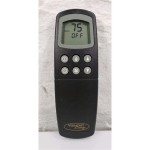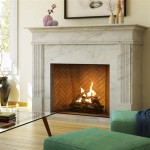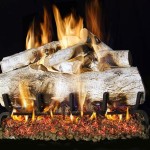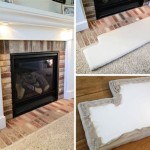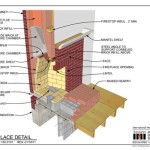Fireplace Summer Front Cover: A Paradoxical Design Choice
The concept of a "Fireplace Summer Front Cover" presents an immediate paradox. Fireplaces are intrinsically linked to cold weather, winter holidays, and the desire for warmth and comfort during the colder months. Conversely, summer evokes images of sunshine, beaches, outdoor activities, and a general disregard for indoor heating. Putting these two elements together on the front cover of a publication or product demands careful consideration and strategic execution to be effective and avoid confusing the target audience.
The success of such a design hinges on understanding the associations and connotations that both a fireplace and summer bring to mind, and then finding a creative bridge that connects them in a compelling and meaningful way. It necessitates a visual or thematic juxtaposition that challenges conventional expectations and sparks curiosity. The cover must communicate a specific message or feeling that resonates with the viewer, even if at first glance the imagery appears contradictory.
There are numerous potential reasons why someone might choose to utilize a fireplace on a summer front cover. It could be for artistic effect, to create a sense of irony, or to represent a particular theme or concept relevant to the publication or product. Whatever the motivation, the design must be well executed and carefully considered to ensure that it achieves its intended purpose.
Exploring the Potential Meanings and Interpretations
One possible interpretation of a fireplace on a summer front cover could revolve around the idea of contrast and juxtaposition. The stark difference between fire and ice, warmth and cold, could be used to represent opposing forces, conflicting emotions, or contrasting themes. Perhaps the publication deals with topics that explore both the positive and negative aspects of life, or that highlight the complexities of human experience. The fireplace, in this context, could symbolize the internal struggles or the hidden darkness that can exist even during the brightest of times. It might also be used to visually represent the internal warmth and comfort found in family and home, even amidst the outward chaos of summer activities.
Another potential meaning could be related to the concept of nostalgia and longing. A fireplace often evokes feelings of comfort, security, and cherished memories. Placing it on a summer front cover could be a way of tapping into those emotions and reminding viewers of simpler times or past experiences. Perhaps the publication or product is aimed at a mature audience that appreciates nostalgia and values tradition. The visual element of the fireplace can serve as a powerful trigger for memories and emotions, prompting viewers to reflect on their own personal histories and experiences. This design choice may also subtly hint at themes of relaxation, storytelling, and the importance of slowing down and appreciating the present moment.
Finally, the use of a fireplace could represent a specific theme or event that occurs during the summer months. While fireplaces are typically associated with winter, there might be situations where they are relevant to the summer season. For example, the cover could be promoting a summer retreat in the mountains, where evenings can be cool enough to warrant a fire. Or, the publication might be covering a historical event that took place during the summer and involved the use of a fireplace. It is also possible that the fireplace is a metaphorical representation of something else entirely, such as the burning passion or creative energy that sustains a particular endeavor.
Key Design Considerations
When designing a fireplace summer front cover, several key elements need to be carefully considered. The overall color palette should be harmonious and visually appealing, taking into account the contrasting elements of fire and summer. Warm colors like red, orange, and yellow can be used to represent the fire, while cool colors like blue, green, and turquoise can evoke the feeling of summer. The use of these colors must be balanced to prevent one element from overpowering the other. Consider how the colors interact and complement each other to create a visually cohesive and engaging design.
The typography used on the cover should be clear, legible, and appropriate for the overall style and tone of the publication or product. The font choice should complement the imagery and reinforce the message that the cover is trying to convey. A bold, modern font might be suitable for a publication aimed at a younger audience, while a more traditional font might be appropriate for a publication with a more sophisticated or classic style. Size and placement of the text are also critical for readability and visual hierarchy. The title should be prominent and easily readable, while smaller text elements can be used to provide additional information or context.
The composition of the cover should be balanced and visually engaging. The placement of the fireplace and other elements should be carefully considered to create a sense of harmony and visual interest. Avoid overcrowding the cover with too much detail, as this can make it appear cluttered and confusing. Instead, focus on creating a clean and uncluttered design that draws the viewer's eye to the key elements. Consider using the rule of thirds to create a more dynamic and visually appealing composition. Experiment with different layouts and arrangements until you find one that effectively communicates the intended message.
Examples of Effective Implementation
One example of successful implementation might involve a magazine cover featuring a stylized illustration of a modern fireplace alongside images of summer fruits and flowers. The juxtaposition of these elements creates a sense of visual intrigue and invites the viewer to explore the contents of the magazine. The color palette could be bright and vibrant, with warm hues of orange and yellow contrasting with cool shades of blue and green.
Another example could be a book cover featuring a photograph of a rustic fireplace in a summer cottage. The image could evoke feelings of nostalgia and comfort, suggesting a story that explores themes of family, tradition, and the simple pleasures of life. The typography could be elegant and understated, with a classic font that complements the rustic aesthetic of the image. The overall design should be clean and uncluttered, allowing the photograph to speak for itself.
A third possibility could be a product packaging design featuring a stylized illustration of a fireplace with a summer theme. Imagine a jar of artisanal jam, marketed with a label that contrasts the warmth of a fire with the sweetness of summer fruit. The illustration could incorporate elements such as sunflowers, berries, or other summery motifs to create a visually appealing and memorable design. The color palette could be bold and playful, with contrasting colors that draw the eye and create a sense of excitement.

Ornate Four Piece Cast Iron Summer Fireplace Cover Architectural Antiques

Cast Iron Fireplace Summer Front Cover
Vintage Cast Iron Surround Summer Cover Hearth Com Forums Home

Number 14 Summerfront Architectural S

Victorian 1860 S Architectural Salvage Antique Fireplace Summer Cover

1800s T Bent And Sons Cast Iron Fireplace Arch Surround W Summer Cover Chairish

Original C 1880 S Antique American Ornamental Perforated Cast Iron Interior Residential Metallic Gold Enameled Fireplace Summer Cover Or Front

American Dawson Brothers Cast Iron Fireplace Front And Summer Cover Ruby Lane

American Dawson Brothers Cast Iron Fireplace Front And Summer Cover Chairish

Antique Iron Fireplace Summer Cover Ebth


